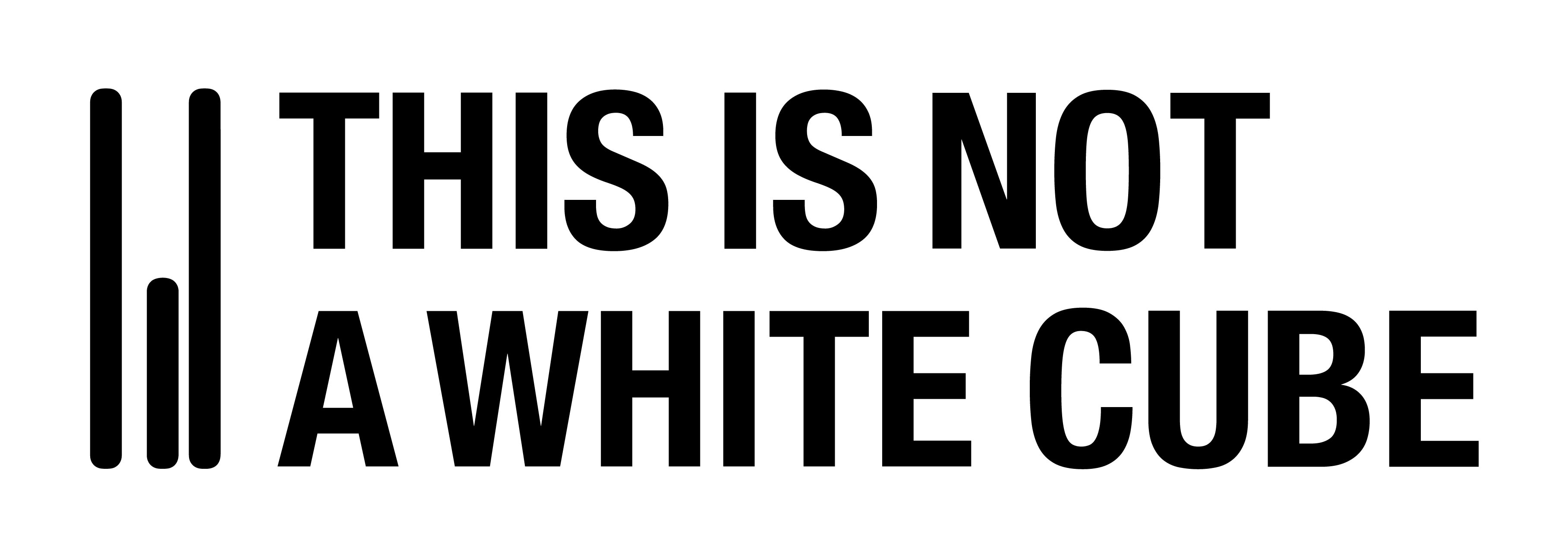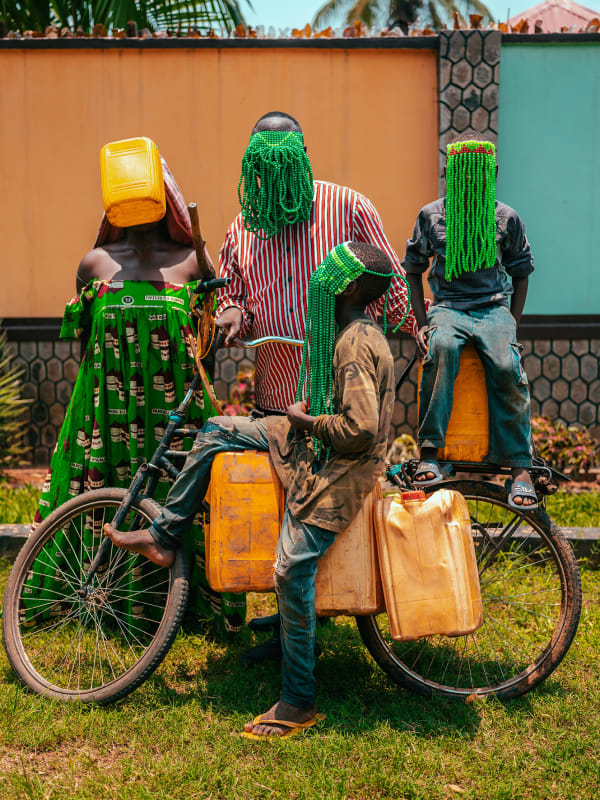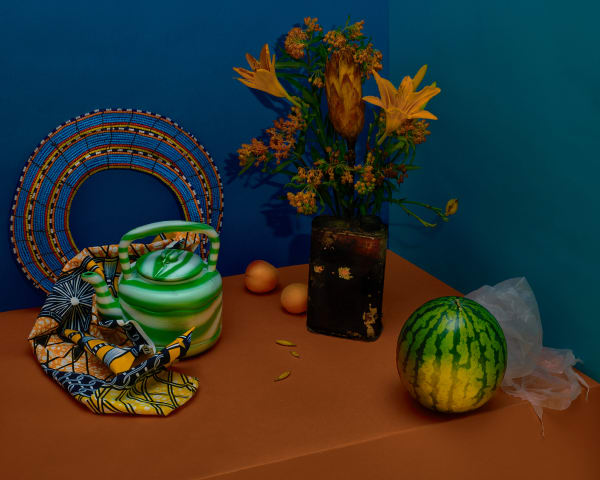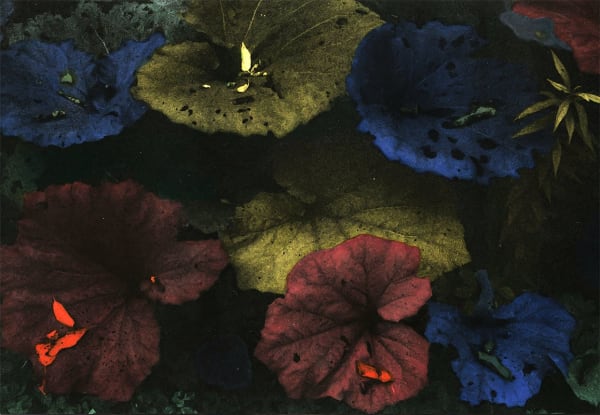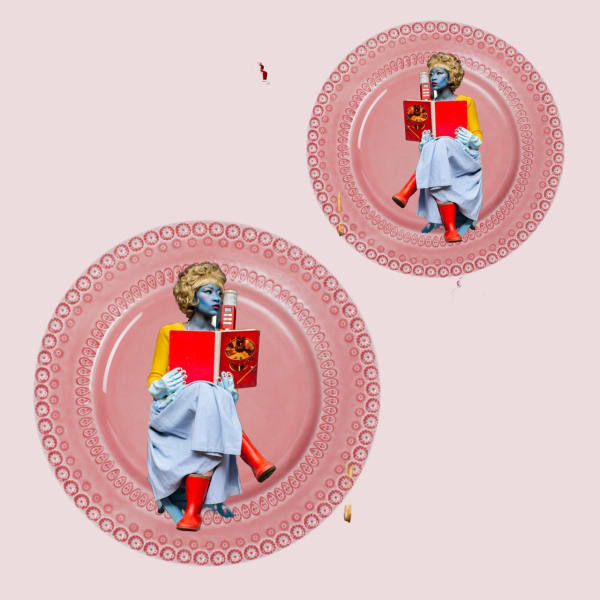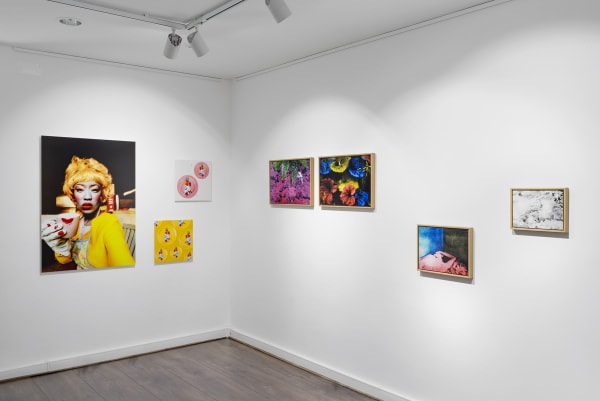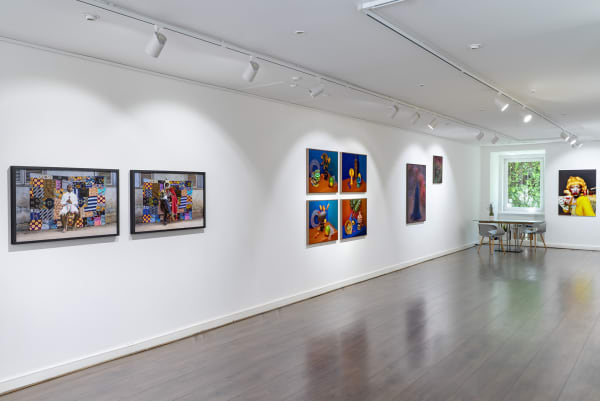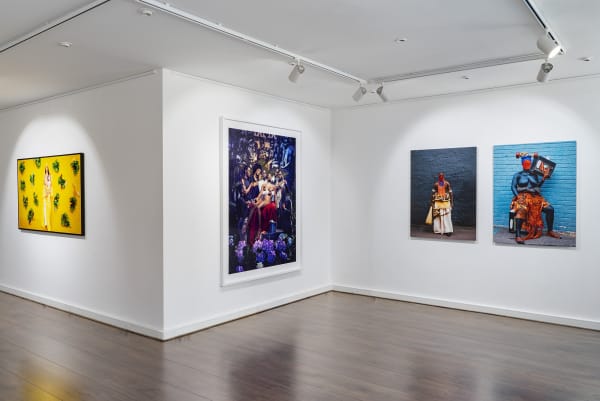ENCONTROS E DIÁLOGOS INTERCULTURAIS: Exposição Coletiva: Dagmar Van Weeghel, Maya-Inès Touam, Sidonie Hadoux, Remofiloe Mayisela, Nicole Rafiki, Kudzanai Chiurai, and René Tavares.
The exhibition "INTERCULTURAL ENCOUNTERS AND DIALOGUES" establishes a platform to build dialogues between the participating artists, exploring their works and the connections that can be made between them. Although each artist brings their own perspective, there are common themes and approaches that permeate their work, allowing us to draw parallels and create shared narratives.
Through different means of artistic expression, these artists explore issues of identity, diaspora, gender, colonialism and the connections between the past and the present. In this exhibition, we seek to create correlations between their works, revealing their personal narratives and the intersections that emerge when they are brought into dialogue.
Through his photographs, Van Weeghel aims to offer an alternative perspective on the world and human relationships. The recurrent presence of women in her compositions is a way of highlighting the central role they play in society and in the construction of identity and historical narrative.
Maya-Inès Touam, born in France and daughter of Algerian parents, explores her own identity through photography. By delving into her roots and researching African diasporas in France, the artist offers a post-colonial perspective on immigration. Her work, simultaneously anthropological and dreamlike, questions the notion of identity as something fixed and unique.
While Van Weeghel focuses on the portrait of real women, exploring their stories and experiences, Touam explores her own identity as the granddaughter of Algerian immigrants, seeking to understand how to integrate the two shores of the Mediterranean. Both artists use photography as a medium to tell personal and social stories, challenging preconceived notions of identity and belonging.
Sidonie Hadoux and Remofiloe Mayisela thus share a focus on feminism and social issues in their work. Hadoux uses photography to question the consequences of capitalist patriarchy in post-industrial landscapes, while Mayisela addresses patriarchal and cultural taboos through self-portraiture and performance. Both artists challenge social norms and explore the role of women in contemporary society.
Nicole Rafiki, a Congolese artist based in Oslo, uses primarily color photography, embroidery and textiles in her creations. Her work examines historical and socio-political issues related to identity, forced migration, and racialized stereotypes, while incorporating elements of African cultural traditions and a Westernized anthropological and ethnographic perspective.
Zimbabwean-born Kudzanai Chiurai incorporates a variety of media in his work to address political and economic inequalities and conflicts in post-colonial societies. His personal experience as part of Zimbabwe's so-called Born Free generation, born after the country's independence, influences his artistic approach. Chiurai uses narrative, symbolism and mise-en-scène to reflect on intergenerational inequality, political conflicts and the lingering consequences of colonialism.
Chiurai and Rafiki use different media to challenge established norms and offer new perspectives on inequality, identity, and the impact of colonialism. Both artists explore narrative as a powerful tool of expression. Chiurai, in his general artistic practice, through human figures in his paintings, photographs, and installations, constructs visual narratives that highlight intergenerational inequality and political conflict in post-colonial societies. His work is full of symbolism, inviting the viewer to delve into the layers of meaning and to reflect on the complex realities that permeate African life. On the other hand, Rafiki also uses symbolism in his photographic staging, blending elements of African cultural and religious traditions with a Westernized gaze. His meticulous images invite self-analysis, the rescue of memory, and reflection on loss and resilience.
Both Chiurai and Rafiki are activists through their artwork. Chiurai, with his self-imposed exile and criticism of the Zimbabwean government, openly challenges oppressive political structures and seeks a resolution of conflicts in society. His art is a powerful voice of protest and a call to action. For her part, Rafiki addresses issues of displacement, discrimination, and identity definitions through an art practice that she considers therapeutic and healing. Her work is an invitation to inner transformation and resilience, while challenging stereotypical perceptions of blackness and femininity.
The photographic series " Two Lives Tchiloli", by René Tavares, is a visual representation of the encounter between three peoples - Portuguese, French and Santomense - and the heritage that stems from them. Tavares uses documentary photographs to transport us to a historical past and a cultural tradition that deserve to be recovered. But it also transports us to the present day, where ideologies and concepts related to territory and identity are debated, calling into question the physical and ideological borders between civilisations. Tavares' work takes us into a current and committed dimension, promoting a revision of the academic and political history of the African continent on the international scene.
René Tavares establishes a connection with other artists through the exploration of cultural heritage and the intersection of different peoples. His documentary photographs delve into the historical past and invite us to question the physical and ideological boundaries between civilisations. Tavares' work contributes to the wider debate on identity and collective memory, offering a unique perspective on the encounter between different cultures.
By exploring these dialogues between the artists, " INTERCULTURAL ENCOUNTERS AND DIALOGUES " offers an enriching and stimulating experience, inviting the audience to delve into the complexity of the social, cultural and historical issues present in the works. Each artist contributes with their unique voice to the overall picture, highlighting the diversity and richness of contemporary artistic expression.
Included artists: Dagmar Van Weeghel, Maya-Inès Touam, Sidonie Hadoux, Remofiloe Mayisela, Nicole Rafiki, Kudzanai Chiurai, and René Tavares.
-
 DAGMAR VAN WEEGHELWomen in Antiquity III, 2020Archival Pigment Print, Custom Framed, mounted on 3mm dibond120 × 90 cmEdition of 3 plus 2 artist's proofs(Edition record)
DAGMAR VAN WEEGHELWomen in Antiquity III, 2020Archival Pigment Print, Custom Framed, mounted on 3mm dibond120 × 90 cmEdition of 3 plus 2 artist's proofs(Edition record) -
 Nicole Rafiki, Homebound, 2022
Nicole Rafiki, Homebound, 2022 -
 Nicole Rafiki, Carry your own, 2021
Nicole Rafiki, Carry your own, 2021 -
 Nicole Rafiki, Past is Present, Present is Future, 2022
Nicole Rafiki, Past is Present, Present is Future, 2022 -
 Nicole Rafiki, Untitled, 2021
Nicole Rafiki, Untitled, 2021 -
 Maya-Inès Touam, Bidon vernis, 2020
Maya-Inès Touam, Bidon vernis, 2020 -
 Maya-Inès TouamCitron et plastique, 2020Fine Art print on Hahnemuhle paper64 x 80 cmEdition of 3 plus 1 artist's proof(Edition record)
Maya-Inès TouamCitron et plastique, 2020Fine Art print on Hahnemuhle paper64 x 80 cmEdition of 3 plus 1 artist's proof(Edition record) -
 Maya-Inès Touam, LV et Protéa, 2020
Maya-Inès Touam, LV et Protéa, 2020 -
 Maya-Inès Touam, Méduse et Papillon, 2020
Maya-Inès Touam, Méduse et Papillon, 2020 -
 Kudzanai Chiurai, We Live in Silence XVIII, 2017
Kudzanai Chiurai, We Live in Silence XVIII, 2017 -
 René Tavares, Actor not an actor, 2019
René Tavares, Actor not an actor, 2019 -
 Sidonie HadouxClimbing (Series: Explorations), 2021Glicée print on Fine Art Matt paper (ed. 3)60 x 40 cm
Sidonie HadouxClimbing (Series: Explorations), 2021Glicée print on Fine Art Matt paper (ed. 3)60 x 40 cm -
 Sidonie HadouxCounting the Waves (Series: Explorations), 2021Glicée print on Fine Art Matt paper (ed. 3)40 x 30 cm
Sidonie HadouxCounting the Waves (Series: Explorations), 2021Glicée print on Fine Art Matt paper (ed. 3)40 x 30 cm -
 Sidonie HadouxFrozen (Series: Explorations), 2021Glicée print on Fine Art Matt paper (ed. 3)30 x 20 cm
Sidonie HadouxFrozen (Series: Explorations), 2021Glicée print on Fine Art Matt paper (ed. 3)30 x 20 cm -
 Sidonie HadouxThe roots are in the air (Series: Explorations), 2021Glicée print on Fine Art Matt paper (ed. 3)60 x 40 cm
Sidonie HadouxThe roots are in the air (Series: Explorations), 2021Glicée print on Fine Art Matt paper (ed. 3)60 x 40 cm -
 Remofiloe MayiselaMr.s May (Series: Lip Service), 2021Glicée print on Fine Art Baryta paper (ed. 5)84,1 x 118,9 cmEdition of 5(Edition record)
Remofiloe MayiselaMr.s May (Series: Lip Service), 2021Glicée print on Fine Art Baryta paper (ed. 5)84,1 x 118,9 cmEdition of 5(Edition record) -
 Remofiloe MayiselaSeven Colours (Pink) (Series: Lip Service), 2021Glicée print on Fine Art Baryta paper (ed. 15)42 x 42 cmEdition of 15(Edition record)
Remofiloe MayiselaSeven Colours (Pink) (Series: Lip Service), 2021Glicée print on Fine Art Baryta paper (ed. 15)42 x 42 cmEdition of 15(Edition record) -
 Remofiloe MayiselaSeven Colours (Yellow) (Series: Lip Service), 2021Glicée print on Fine Art Baryta paper (ed. 15)42 x 42 cmEdition of 15(Edition record)
Remofiloe MayiselaSeven Colours (Yellow) (Series: Lip Service), 2021Glicée print on Fine Art Baryta paper (ed. 15)42 x 42 cmEdition of 15(Edition record) -
 DAGMAR VAN WEEGHELFrom the Ancient Well, 2020Archival Pigment Print, Custom Framed mounted on 3mm dibond60 x 45 cmEdition of 5 plus 1 artist's proof(Edition record)
DAGMAR VAN WEEGHELFrom the Ancient Well, 2020Archival Pigment Print, Custom Framed mounted on 3mm dibond60 x 45 cmEdition of 5 plus 1 artist's proof(Edition record)
